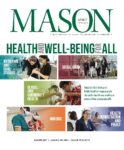“…I am both heartbroken and frustrated about the lack of inclusion. This is a difficult but important conversation, and it’s time for big changes.”
—Cheryl Boone Isaacs, President of the Academy of Motion Picture Arts and Sciences, January 2016
What does it mean to teach a diverse group of students a craft in an inaccessible industry? I have asked myself this question frequently over the past 15 years of university teaching.
Our media industry is under increasing (and deserved) scrutiny. It is being asked to address the ways in which women and artists of color have been excluded on both sides of the camera. For every Ava DuVernay, Shonda Rhimes, Jenji Kohan, and Aziz Ansari who work with performers and crews of color, and who reflect gendered and sexuality spectrums, there are thousands of directors, showrunners, and writers plugging away at standard fare that does not reflect the world in which we live.
This industry is clouded by power, and those in it, knowingly or not, work to sustain a system in which women are sexualized, gender nonconforming characters grotesquely othered, and nameless people of color are absent (or killed first) on screen. As producer Effie Brown highlighted in her on-screen debate with Matt Damon on Project Greenlight, representations are much about who is writing, directing, and working the lens.
The statistics demonstrating restricted access are striking. According to the Celluloid Ceiling 2014 report on women in Hollywood, only 13 percent of the top 700 films in 2014 were directed by women, with women in few technical roles (9 percent in cinematography, 18 percent in editing, and 13 percent in writing). For performers, typically 25 percent of top films have leading roles for women, and a paltry 11 to 14 percent of top films have non-white protagonists*.
Our faculty is unified in a commitment to inclusion. The films our students analyze reflect divergent and global stories. For example, in Cinematography, Professor Hans Charles’ students study The Godfather and Mother of George. In Professor Thomas Britt’s Ethics of Film and Video course, students regularly discuss issues of representation that occur on both sides of the camera, as well as how included and excluded perspectives affect viewers. In the Business of Film and Video, instructor Lisa Thrasher’s students explore industry standard business models and alternative modes of distribution, exhibition, and funding as means to empower diversity of voice within the industry or create their own. In partnering with Cynthia Fuchs and the Film and Media Studies Program, our Visiting Filmmakers Series brings internationally recognized filmmakers to campus who reflect the industry as we want it to exist.
Within Mason resides the charge to do things differently and to address issues of access, power, and inclusion. The Mason IDEA embraces innovation, diversity, entrepreneurship, and accessibility—all things that the FAVS Program exemplifies. We believe that in teaching artists entrepreneurial skills, they learn to work independently and within a changing industry, allowing for greater inclusion. This is why teaching in and directing this program at this time could not be more meaningful.
From the beginnings of this industry, film technologists crafted our tools for a specific type of body. Film lighting equipment was designed for Caucasian skin, and tripods were built for the average height of a Western man. There is as much to dismantle as there is to create. We owe it to our students to do so with the hope that in the near future there will be a place for all talented artists in the industry. That being said, we are striving to build a program that gives our graduates the tools to create their own.
—Giovanna Chesler, Director, Film and Video Studies
*Hollywood Diversity Report at UCLA and Race/Ethnicity in 600 Popular Films at USC


No Comments Yet »
Leave a comment